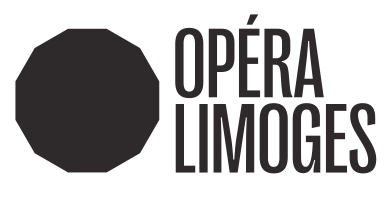 Founded in 1983 as an association of the Loi 1901, the Clermont-Auvergne Opera was then called Lyric Centre and mainly organized the International Opera Singing Competition of the City of Clermont-Ferrand.
Founded in 1983 as an association of the Loi 1901, the Clermont-Auvergne Opera was then called Lyric Centre and mainly organized the International Opera Singing Competition of the City of Clermont-Ferrand.
In 1998, the municipality of Clermont-Ferrand decided to entrust it with the creation of a lyrical season. Combining quality, diversity, openness and originality, it quickly became a popular success. By giving performances at the Opéra-Théâtre and mixing works from the repertoire and creations, it allowed Clermont-Ferrand to find its place among «lyric» cities. Moreover, thanks to an intense policy of artistic and cultural education, Clermont Auvergne Opera also hope to renew its public and make the opera accessible to the greatest number.
www.clermont-auvergne-opera.com
 The Limoges Opera is a key player in the national lyric and musical landscape. Engaged in numerous projects with other French and European operas, it develops a lyric, musical and choreographic policy aimed at the excellence of proposals, giving place to heritage works and creation. It also has a thematic approach to its programming, which aims to teach directories to audiences. The artistic choices give room to young talents, whether they are singers, songwriters, directors or conductors. Those are mentored by established artists, which makes the Limoges Opera an identified pole of professional springboard.
The Limoges Opera is a key player in the national lyric and musical landscape. Engaged in numerous projects with other French and European operas, it develops a lyric, musical and choreographic policy aimed at the excellence of proposals, giving place to heritage works and creation. It also has a thematic approach to its programming, which aims to teach directories to audiences. The artistic choices give room to young talents, whether they are singers, songwriters, directors or conductors. Those are mentored by established artists, which makes the Limoges Opera an identified pole of professional springboard.
www.operalimoges.fr
 Music and dance, which were combined 25 years ago, are now the two main areas of activity of the Foundation.
Music and dance, which were combined 25 years ago, are now the two main areas of activity of the Foundation.
Music is structured into two departments: Voice and Repertoire, and Musical Creation. The dance is covered by the department of choreographic creation. With the educator program and the library and resource departments, which reinforce the Foundation’s project focus on the humanities, the International Centre for Music and Dance is thus composed of three artistic programs and two general departments.
The Foundation gives priority to research, dialogue and knowledge transfer between languages and artistic practices.
With its three libraries, it is one of the main promoters of the interpretation of the repertoire elucidated by the study of historical sources and data, as well as a major supporter of creative composition and choreography.
Music and dance enrich the creative process by interacting with other disciplines.
Visual arts, poetry, literature and of course theatre contribute to artists’ projects and broaden the understanding of heritage
www.royaumont.com
 The ensemble Les Surprises is a baroque ensemble with variable geometry, created in 2010 at the initiative of Juliette Guignard, violist, and Louis-Noël Bestion de Camboulas, organist and harpsichordist.
The ensemble Les Surprises is a baroque ensemble with variable geometry, created in 2010 at the initiative of Juliette Guignard, violist, and Louis-Noël Bestion de Camboulas, organist and harpsichordist.
The ensemble takes its name from the opera-ballet Les Surprises de l’Amour by Jean-Philippe Rameau, thus placing itself under the good star of this composer, with the aim of exploring opera music in all its states!
By taking the artistic direction of this ensemble, Louis-Noël Bestion de Camboulas wishes to participate in the rediscovery of the baroque repertoire, to enrich it with new interpretations and explore the richness of orchestration possible, thanks to the baroque instrumentalism.
The work of the ensemble Les Surprises is anchored in a musical and historical research approach. Thus, Louis-Noël Bestion de Camboulas is dedicated to finding and highlighting scores that have never been taken out of the musical collections of the Bibliothèque Nationale de France since the 18th century (as in the latest productions Passion with Véronique Gens, Rameau chez la Pompadour around unpublished operas by Rameau).
www.les-surprises.fr

